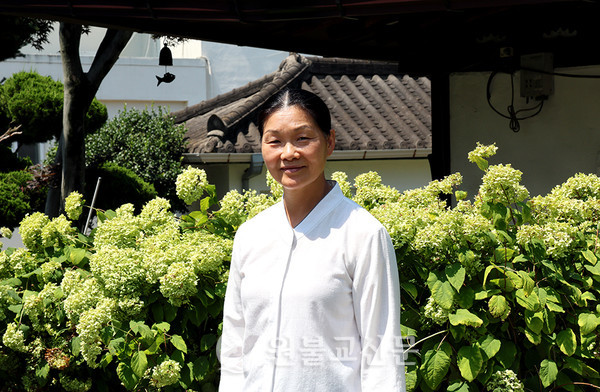NONTHEISTFRIENDS.ORG
Presenting the work of Quaker atheists, agnostics, humanists, and others who practice Quakerism without supernatural beliefs
Roots and Flowers of Quaker Nontheism (Abridged)
This abridged version of “Roots and Flowers of Quaker Nontheism” was compiled for the convenience of students of Quaker nontheism.
An ellipses ( . . . ) or brackets ([ ]) indicate where material has been omitted.
The original is a chapter in Quaker and Naturalist Too (Morning Walk Press of Iowa City, IA, in 2014, is available from www.quakerbooks.org).
The chapter includes text (pp. 65-103), bibliography (pp. 147-157), source notes (pp. 165-172), and references to 20 quotations that appear elsewhere in the book but are not in this abridged version.
----
Part I: Roots of Quaker Nontheism
This is a study of the roots of Quaker nontheism today. Nontheist Friends are powerfully drawn to Quaker practices but they do not accompany this with a faith in God. Nontheism is an umbrella term covering atheists, agnostics, secular humanists, pantheists, wiccaists, and others. You can combine nontheist with other terms and call yourself an agnostic nontheist or atheist nontheist, and so on. Some nontheists have set aside one version of God (e.g. as a person) and not another (e.g. as a word for good or your highest values). A negative term like nontheism is convenient because we describe our views so many different ways when speaking positively.
Many of the Quakers mentioned here were not nontheists but are included because they held views, often heretical in their time, that helped Friends become more inclusive.
- In the early days this included questioning the divinity of Christ, the divine inspiration of the Bible, and the concepts of heaven, hell, and immortality. Later Friends questioned miracles, the trinity, and divine creation.
- Recently the issue has been whether Quakers have to be Christians, or theists.
All this time there were other changes happening in speech, clothing, marriage practices, and so on. Quakerism has always been in progress.
Views held today are no more authentic because they were present in some form in earlier years. However, it is encouraging to Quaker nontheists today to find their views and their struggle prefigured among Friends of an earlier day.
In the following excerpts we learn about Quaker skeptics of the past and the issues they stood for. These are the roots that support the flowers of contemporary Quaker nontheism. . . .
First Generation Quaker Skeptics
Quakers were a varied group at the beginning. There was little effective doctrinal control and individuals were encouraged to think for themselves within the contexts of their local meetings. Many of the early traditions are key for nontheists today, such as the emphasis on actions other than talk and the injunction to interpret what we read, even Scripture. All the early Friends can be considered forerunners of the Quaker nontheists of today, but two people deserve special mention.
Gerard Winstanley (1609–c.1660) was a Digger, or True Leveller, who became a Quaker. . . . He published twenty pamphlets between 1648 and 1652 and was a political and religious revolutionary. He equated God with the law of the universe known by observation and reason guided by conscience and love.
Winstanley wrote,
“I’ll appeal to your self in this question, what other knowledge have you of God but what you have within the circle of the creation? . . . For if the creation in all its dimensions be the fullness of him that fills all with himself, and if you yourself be part of this creation, where can you find God but in that line or station wherein you stand.” [Source Note #1]
Winstanley also wrote,
“[T]he Spirit Reason, which I call God…is that spirituall power, that guids all mens reasoning in right order, and to a right end: for the Spirit Reason, doth not preserve one creature and destroy another . . . but it hath a regard to the whole creation; and knits every creature together into a onenesse; making every creature to be an upholder of his fellow.” [#2]
His emphasis was on the world around and within us: “O ye hear-say Preachers, deceive not the people any longer, by telling them that this glory shal not be known and seen, til the body is laid in the dust. I tel you, this great mystery is begun to appear, and it must be seen by the material eyes of the flesh: And those five senses that is in man, shall partake of this glory.” [#3]
Jacob Bauthumley (1613–1692) was a shoemaker who served in the Parliamentary Army. . . . His name was probably pronounced Bottomley since this is how Fox spelled it. In 1650 he published The Light and Dark Sides of God, the only pamphlet of his that we have. This was declared blasphemous and he was thrown out of the army, his sword broken over his head, and his tongue bored. After the Restoration he became a Quaker and a librarian and was elected sergeant–at–mace in Leicester. For Bauthumley, God dwells in men and in all the rest of creation and nowhere else. We are God even when we sin. Jesus was no more divine than any person is, and the Bible is not the word of God. He wrote,
“I see that all the Beings in the World are but that one Being, and so he may well be said, to be every where as he is, and so I cannot exclude him from Man or Beast, or any other Creature: Every Creature and thing having that Being living in it, and there is no difference betwixt Man and Beast; but as Man carries a more lively Image of the divine Being then [than] any other Creature: For I see the Power, Wisdom, and Glory of God in one, as well as another onely in that Creature called Man, God appears more gloriously in then the rest. . . . And God loves [?] the Being of all Creatures, yea, all men are alike to him, and have received lively impressions of the divine nature, though they be not so gloriously and purely manifested in some as in others, some live in the light side of God, and some in the dark side; But in respect of God, light and darkness are all one to him; for there is nothing contrary to God, but onely to our apprehension. . . . It is not so safe to go to the Bible to see what others have spoken and writ of the mind of God as to see what God speaks within me and to follow the doctrine and leadings of it in me.” [#4]
Eighteenth Century Quaker Skeptics
There were skeptical Quakers who asserted views such as that God created but does not run the universe, that Jesus was a man and not divine, that much of theology is superstition and divides people unnecessarily, and that the soul is mortal.
An example is John Bartram (1699–1777) of Philadelphia. . . . He was a farmer and perhaps the best known botanist in the American colonies. Bartram had a mystical feeling for the presence of God in nature and he supported the rational study of nature. In 1758 he was disowned by Darby Meeting for saying Jesus was not divine, but he continued to worship at that meeting and was buried there.
In 1761 he carved a quote from Alexander Pope over the door of his greenhouse: “Slave to no sect, who takes no private road, but looks through Nature up to Nature’s God.” In 1743 he wrote, “When we are upon the topic of astrology, magic and mystic divinity, I am apt to be a little troublesome, by inquiring into the foundation and reasonableness of these notions” In a letter to Benjamin Rush he wrote, “I hope a more diligent search will lead you into the knowledge of more certain truths than all the pretended revelations of our mystery mongers and their inspirations.” [#5] . . .
Free Quakers
These Friends were disowned for abandoning the peace testimony during the Revolutionary War. The Free Quakers cast the issue in more general terms. They supported freedom of conscience and saw themselves as upholding the original Friends traditions. They wrote:
“We have no new doctrine to teach, nor any design of promoting schisms in religion. We wish only to be freed from every species of ecclesiastical tyranny, and mean to pay a due regard to the principles of our forefathers . . . and hope, thereby, to preserve decency and to secure equal liberty to all. We have no designs to form creeds or confessions of faith, but [hope] to leave every man to think and judge for himself…and to answer for his faith and opinions to . . . the sole Judge and sovereign Lord of conscience.” [#6]
Their discipline forbade all forms of disownment: “Neither shall a member be deprived of his right among us, on account of his differing in sentiment from any or all of his brethren.” [#7]
There were several Free Quaker meetings, the longest lasting being the one in Philadelphia from 1781 to 1834.
Proto–Hicksites
. . . Hannah Barnard (1754–1825) of New York questioned the interpretation of events in the Bible and put reason above orthodoxy and ethics over theology. She wrote a manual in the form of a dialogue to teach domestic science to rural women. It included philosophy, civics, and autobiography. Barnard supported the French Revolution and insisted that masters and servants sit together during her visits. In 1802 she was silenced as a minister and disowned by Friends. She wrote,
“[N]othing is revealed truth to me, as doctrine, until it is sealed as such on the mind, through the illumination of that uncreated word of God, or divine light, and intelligence, to which the Scriptures, as well as the writings of many other enlightened authors, of different ages, bear plentiful testimony. . . . I therefore do not attach the idea or title of divine infallibility to any society as such, or to any book, or books, in the world; but to the great source of eternal truth only.” [#8]
Barnard also wrote, “under the present state of the Society I can with humble reverent thankfulness rejoice in the consideration that I was made the Instrument of bringing their Darkness to light.” [#9] On hearing Elias Hicks in 1819, she is said to have commented that these were the ideas for which she had been disowned. He visited her in 1824, a year before she died.
[Also mentioned in the original version of this essay are Job Scott (1751–1793), Abraham Shackleton (1752–1818), Mary Newhall (c.1780–1829) and Mary Rotch.]
Hicksites
The schism that started in 1827 involved many people but it is instructive to focus on one man at the center of the conflict. Elias Hicks (1748–1830) traveled widely, urging Friends to follow a God known inwardly and to resist the domination of others in the Society. He wrote,
“There is scarcely anything so baneful to the present and future happiness and welfare of mankind, as a submission to traditional and popular opinion, I have therefore been led to see the necessity of investigating for myself all customs and doctrines . . . either verbally or historically communicated . . . and not to sit down satisfied with any thing but the plain, clear, demonstrative testimony of the spirit and word of life and light in my heart and conscience.” [#10]
Hicks emphasized the inward action of the Spirit rather than human effort or learning, but he saw a place for reason. He turned to “the light in our own consciences, . . . the reason of things, . . . the precepts and example of our Lord Jesus Christ, (and) the golden rule.” [#11]
[Also mentioned: Benjamin Ferris (1780–1867).]
Manchester Free Friends
David Duncan (c.1825–1871), a former Presbyterian who had trained for the ministry, was a merchant and manufacturer in Manchester, England. He married Sarah Ann Cooke Duncan and became a Friend in 1852. He was a republican, a social radical, a Free Thinker, and an aggressive writer and debater. Duncan began to doubt Quaker views about God and the Bible and associated the Light Within with intellectual freedom. He developed a following at the Friends Institute in Manchester and the publication of his Essays and Reviews in 1861 brought the attention of the Elders. In it he wrote, “If the principle were more generally admitted that Christianity is a life rather than a formula, theology would give place to religion . . . and that peculiarly bitter spirit which actuates religionists would no longer be associated with the profession of religion.” [#12] In 1871 he was disowned and then died suddenly of smallpox. Sarah Ann Duncan and about 14 others resigned from their meeting and started what came to be called the Free Friends.
In 1873, this group approved a statement which included the following:
“It is now more than two years and a quarter since we sought, outside of the Society of Friends, for the liberty to speak the thoughts and convictions we entertained which was denied to us within its borders, and for the enjoyment of the privilege of companionship in “unity of spirit,” without the limitations imposed upon it by forced identity of opinion on the obscure propositions of theologians. We were told that such unity could not be practically obtained along with diversity of sentiment upon fundamental questions, but we did not see that this need necessarily be true where a principle of cohesion was assented to which involved tolerance to all opinions; and we therefore determined ourselves to try the experiment, and so remove the question, if possible, out of the region of speculation into that of practice. We conceived one idea in common, with great diversity of opinion amongst us, upon all the questions which divide men in their opinions of the government and constitution of the universe. We felt that whatever was true was better for us than that which was not, and that we attained it best by listening and thinking for ourselves.” [#13]
Joseph B. Forster (1831–1883) was a leader of the dissidents after the death of David Duncan. (For another excerpt, see pp. 17.) He wrote, “[E]very law which fixes a limit to free thought, exists in violation of the very first of all doctrines held by the Early Quakers,—the doctrine of the ‘Inner Light’.” [#14]
Forster was editor of a journal published by the Free Friends. In the first issue he wrote,
“We ask for [The Manchester Friend] the support of those who, with widely divergent opinions, are united in the belief that dogma is not religion, and that truth can only be made possible to us where perfect liberty of thought is conceded. We ask for it also the support of those, who, recognizing this, feel that Christianity is a life and not a creed; and that obedience to our knowledge of what is pure and good is the end of all religion. We may fall below our ideal, but we shall try not to do so; and we trust our readers will, as far as they can, aid us in our task.” [#15]
[Also mentioned: George S. Brady (1833–1913).]
Progressive and Congregational Friends
The Progressive Friends at Longwood (near Philadelphia) were committed to peace, and the rights of women and blacks, and were also concerned about church governance and doctrine. . . . Between 1844 and 1874 they separated from other Hicksite Quakers and formed a monthly meeting and a yearly meeting. They asked, “What right had one Friend, or one group of Friends, to judge the leadings of others?” [#16] They objected to partitions between men’s and women’s meetings and the authority of meeting elders and ministers over the expression of individual conscience and other actions of the members. There were similar separations in Indiana Yearly Meeting (Orthodox) in the 1840s, Green Plain Quarterly Meeting in Ohio in 1843 and in Genesee Yearly Meeting (Hicksite) in northern New York and Michigan and in New York Yearly Meeting in 1846 and 1848.
A Congregational Friend in New York declared,
“We do not require that persons shall believe that the Bible is an inspired book; we do not even demand that they shall have an unwavering faith in their own immortality; nor do we require them to assert a belief in the existence of God. We do not catechize men at all as to their theological opinions. Our only test is one which applies to the heart, not to the head. To all who seek truth we extend the hand of fellowship, without distinction of sex, creed and color. We open our doors, to all who wish to unite with us in promoting peace and good will among men. We ask all who are striving to elevate humanity to come here and stand with us on equal terms.” [#17]
In their Basis of Religious Association Progressive Friends at Longwood welcomed “all who acknowledge the duty of defining and illustrating their faith in God, not by assent to a creed, but lives of personal purity, and works of beneficence and charity to mankind.” They also wrote,
“We seek not to diminish, but to intensify in ourselves the sense of individual responsibility. . . . We have set forth no forms or ceremonies; nor have we sought to impose upon ourselves or others a system of doctrinal belief. Such matters we have left where Jesus left them, with the conscience and common sense of the individual. It has been our cherished purpose to restore the union between religion and life, and to place works of goodness and mercy far above theological speculations and scholastic subtleties of doctrine. Creed–making is not among the objects of our association. Christianity, as it presents itself to our minds, is too deep, too broad, and too high to be brought within the cold propositions of the theologian. We should as soon think of bottling up the sunshine for the use of posterity, as of attempting to adjust the free and universal principles taught and exemplified by Jesus of Nazareth to the angles of a manmade creed.” [#18]
Between 1863 and 1874 many of the Friends at Longwood were taken back into membership by their meetings. By the time of the birth of modern liberal Quakerism at the turn of the century, many Friends in unprogrammed meetings had become progressives.
Quaker Free Thinkers
Liberal religious dissenters in the nineteenth century were called Free Thinkers. Lucretia Mott (1793–1880) worked for abolition of slavery, women’s suffrage, and temperance. . . .
- Her motto was “Truth for authority, and not authority for truth.”
- She refused to be controlled by her meeting but also refused to leave it.
Her meeting denied permission to travel in the ministry after 1843 but she went anyway. Mott was a founding member of the Free Religious Association in 1867, when she told them, “I believe that such proving all things, such trying all things, and holding fast only to that which is good, is the great religious duty of our age. . . .
- Our own conscience and the Divine Spirit’s teaching are always harmonious and this Divine illumination is as freely given to man as his reason, or as are many of his natural powers.”
- She also said, “I confess to great skepticism as to any account or story, which conflicts with the unvarying natural laws of God in his creation.” [#19] . . .
In 1849 Mott said,
“I confess to you, my friends, that I am a worshipper after the way called heresy—a believer after the manner many deem infidel. While at the same time my faith is firm in the blessed, the eternal doctrine preached by Jesus and by every child of God since the creation of the world, especially the great truth that
- God is the teacher of his people himself; the doctrine that Jesus most emphatically taught, that the kingdom is with man, that there is his sacred and divine temple.” [#20]
On another occasion she said, “Men are too superstitious, too prone to believe what is presented to them by their church and creed; they ought to follow Jesus more in his non–conformity. . . . I hold that skepticism is a religious duty; men should question their theology and doubt more in order that they might believe more.” [#21]
Elizabeth Cady Stanton wrote in her diary that Mott said to her,
“There is a broad distinction between religion and theology.
- The one is a natural, human experience common to all well–organized minds.
- The other is a system of speculations about the unseen and the unknowable, which the human mind has no power to grasp or explain, and these speculations vary with every sect, age, and type of civilization.
- No one knows any more of what lies beyond our sphere of action than thou and I, and we know nothing.” [#22] . . .
Another Free Thinker was Susan B. Anthony (1820–1906). She was an active supporter of rights for women, abolition of slavery, and temperance. Raised a Quaker, she considered herself one even after she joined the Unitarians because her meeting failed to support abolition. Her friend, Elizabeth Cady Stanton, called her an agnostic. She refused to express her opinion on religious subjects, saying she could only work on one reform at a time. In 1890 she told a women’s organization,
“These are the principles I want to maintain—that our platform may be kept as broad as the universe, that upon it may stand the representatives of all creeds and of no creeds—Jew and Christian, Protestant and Catholic, Gentile and Mormon, believer and atheist.” In a speech in 1896 she said,
“I distrust those people who know so well what God wants them to do, because I notice it always coincides with their own desires. . .
나는 하나님께서 그들에게 원하시는 것이 무엇인지 너무나 잘 안다는 사람들을 불신합니다. 왜냐하면 그것이 항상 그들 자신의 욕망과 일치한다는 것을 알기 때문입니다. . .]
What you should say to outsiders is that a Christian has neither more nor less rights in our association than an atheist. When our platform becomes too narrow for people of all creeds and of no creeds, I myself can not stand upon it.” When asked in an interview in 1896 “Do you pray?”, she answered,
“I pray every single second of my life; not on my knees, but with my work. My prayer is to lift women to equality with men. Work and worship are one with me. I know there is no God of the universe made happy by my getting down on my knees and calling him ‘great’.”
In 1897 she wrote, “(I)t does not matter whether it is Calvinism, Unitarianism, Spiritualism, Christian Science, or Theosophy, they are all speculations. So I think you and I had better hang on to this mundane sphere and keep tugging away to make conditions better for the next generation of women.” Anthony said to a group of Quakers in 1885, “I don’t know what religion is. I only know what work is, and that is all I can speak on, this side of Jordan.” [#23]
Elizabeth Cady Stanton (1815–1902) was a leader of the women’s suffrage movement for fifty-five years and one of the most famous and outspoken Free Thinkers of her day. She was a member of Junius Monthly Meeting, a Congregational meeting in upstate New York, during their first ten years after splitting off from Genesee Yearly Meeting in 1848. As a child she was terrified by preaching about human depravity and sinners’ damnation. Later she wrote, “My religious superstitions gave place to rational ideas based on scientific facts, and in proportion, as I looked at everything from a new standpoint, I grew more happy day by day.” [#24] She also wrote,
“I can say that the happiest period of my life has been since I emerged from the shadows and superstitions of the old theologies, relieved from all gloomy apprehensions of the future, satisfied that as my labors and capacities were limited to this sphere of action, I was responsible for nothing beyond my horizon, as I could neither understand nor change the condition of the unknown world. Giving ourselves, then, no trouble about the future, let us make the most of the present, and fill up our lives with earnest work here.” [#25]
[Also mentioned: Maria Mitchell (1818–1889).]
Modern Liberal Friends
. . . Joseph Rowntree (1836–1925) was a chocolate manufacturer and reformer of the Religious Society of Friends and of society in general. He helped craft the London Yearly Meeting response to the Richmond Declaration of 1887, when he wrote, “(T)he general welfare of the Society of Friends the world over will not be advanced by one Yearly Meeting following exactly in the footsteps of another, but by each being faithful to its own convictions and experience. This may not result in a rigid uniformity of either thought or action, but it is likely to lead to something far better—to a true and living unity.” [#26]
The conference of Friends in Manchester in 1895 was a clear declaration of their views, as was the first Summer School (on the British model) at Haverford College in 1900, the founding of Friends General Conference in 1900 and American Friends Service Committee in 1917.
William Littleboy (c.1852–1936) and wife Margaret Littleboy were among the first staff at Woodbrooke Quaker Study Centre.
- William Littleboy was an advocate of ethical living as basis for religion, and of opening the Religious Society of Friends to skeptics.
- In 1902 he wrote to Rufus Jones urging consideration be given to Quakers who do not have mystical experiences, and
- in 1916 he published a pamphlet, The Appeal of Quakerism to the Non–Mystic.
In it he wrote,
- “We know that to some choice souls God’s messages come in ways which are super–normal, and it is natural that we should look with longing eyes on these; yet such cases are the exception, not the rule. . . .
- Let us then take ourselves at our best. [Non–mystics] are capable of thought and care for others. We do at times abase ourselves that others may be exalted. On occasion we succeed in loving our enemies and doing good to those who despitefully use us. For those who are nearest to us we would suffer—perhaps even give our life, because we love them so. . . . To the great non–mystic majority [the Quaker’s] appeal should come with special power, for he can speak to them, as none other can whose gospel is less universal.” [#27]
This influenced the young Henry Cadbury who many years later said, “I am sure that over the years [William Littleboy’s] perceptive presentation of the matter has brought real relief to many of us.” [#28]
[Also mentioned: Arthur Stanley Eddington (1882–1934), Joel Bean (1825–1914) and Hannah Shipley Bean (1830–1909).]
Reunifiers
Some Friends worked their entire lives to bring together dissident branches of the Religious Society of Friends. Examples are Henry Cadbury and Rufus Jones.
They based their call for reunification on the same grounds that nontheist Friends rely on today.
These included an emphasis
- on practice rather than beliefs;
- the idea that Quakers need not hold the same beliefs;
- describing Quaker beliefs in the meeting discipline by quoting from the writings of individuals;
- the idea that religiously inspired action can be associated with many different faiths;
- the love of diversity within the Religious Society of Friends;
- the view that religion is a matter our daily lives; and
- the emphasis on Jesus as a person rather than doctrine about Jesus.
These bases for reunification among Friends also serve to include nonmystics, nonChristians, and people of other faiths including nontheist faiths.
- 일부 친우들은 친우 종교 협회의 반체제 지부를 하나로 모으기 위해 평생을 일했습니다. 그 예로는 헨리 캐드버리(Henry Cadbury)와 루퍼스 존스(Rufus Jones)가 있습니다.
- 그들은 오늘날 무신론자들의 친구들이 의지하는 것과 동일한 근거에 통일을 요구했습니다.
- 여기에는 강조점이 포함되었습니다.
- 신념보다는 실천에;
- 퀘이커교도가 동일한 신념을 가질 필요는 없다는 생각;
- 개인의 글을 인용하여 모임 규율에 대한 퀘이커 신앙을 설명합니다.
- 종교적으로 영감을 받은 행동이 다양한 신앙과 연관될 수 있다는 생각;
- 친우종교협회 내의 다양성에 대한 사랑;
- 종교는 우리의 일상생활의 문제라는 견해; 그리고
- 예수에 관한 교리보다는 인격체로서의 예수를 강조합니다.
NonChristian Friends
At regular intervals during the history of Friends there is discussion about whether we have to be Christian to be Quaker. This is often in the form of an exchange of letters in a Quaker journal. One such flurry was prompted by two letters from Watchman in The Friend in 1943 and 1944 (reprinted in 1994).
In 1953 Arthur Morgan proposed inviting people of other faiths to join Friends. In 1966 Henry Cadbury was invited to address the question in a talk given at the annual sessions of Pacific Yearly Meeting. In his view Quakerism and Christianity represent sets of beliefs from which individuals make selections, with no one belief required of all. Quaker universalists have raised the issue many times (for example, John Linton in 1979 and Daniel A. Seeger in 1984). [#29]
Universalist Friends
The Quaker Universalist Group was formed in Britain in 1979, and the Quaker Universalist Fellowship in the United States in 1983. Among the founders were nontheists John Linton and Kingdon W. Swayne. It is a diverse movement.
For the early Friends universalism meant that any person could be saved by Christ. Today, for some Friends universalism is about accepting diversity of religious faith. For others it is an active searching for common aspects of different faiths. Universalism can also mean an effort to learn from each other and live together well and love each other, differences and all.
Conclusion
Over the years, many Quakers stood against the doctrinal views of their times. They represent a continual stream of dissent and a struggle for inclusiveness that started with the birth of our Society. What was rejected at one point was accepted later. Much of what Friends believe today would have been heresy in the past.
Through the years, certain traditions in the Religious Society of Friends have supported the presence of doctrinal skeptics. This included being noncreedal, tolerant, and universalist; concern for experience rather than beliefs; authority of the individual as well as the community, interpreting what we read; and the conviction that Quaker practice and Quaker membership do not require agreement on religious doctrine.
Many Quaker practices are typically explained in terms of God, Spirit or the Inner Light, such as worship, leadings, discernment, the sense of the meeting, and continual revelation. Nontheist Friends embrace the practices without the explanation.




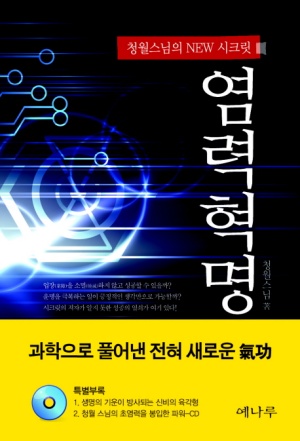
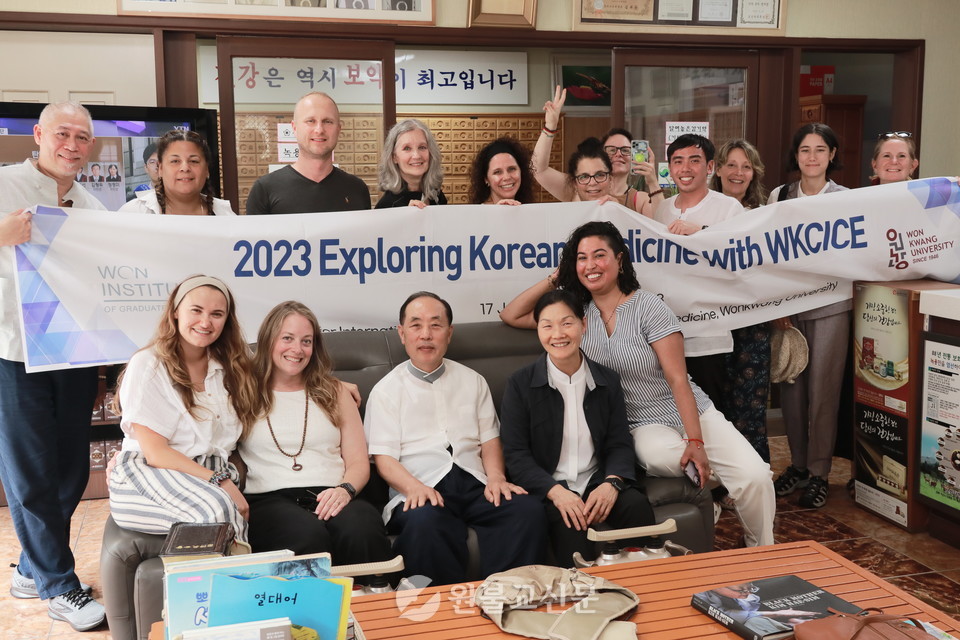
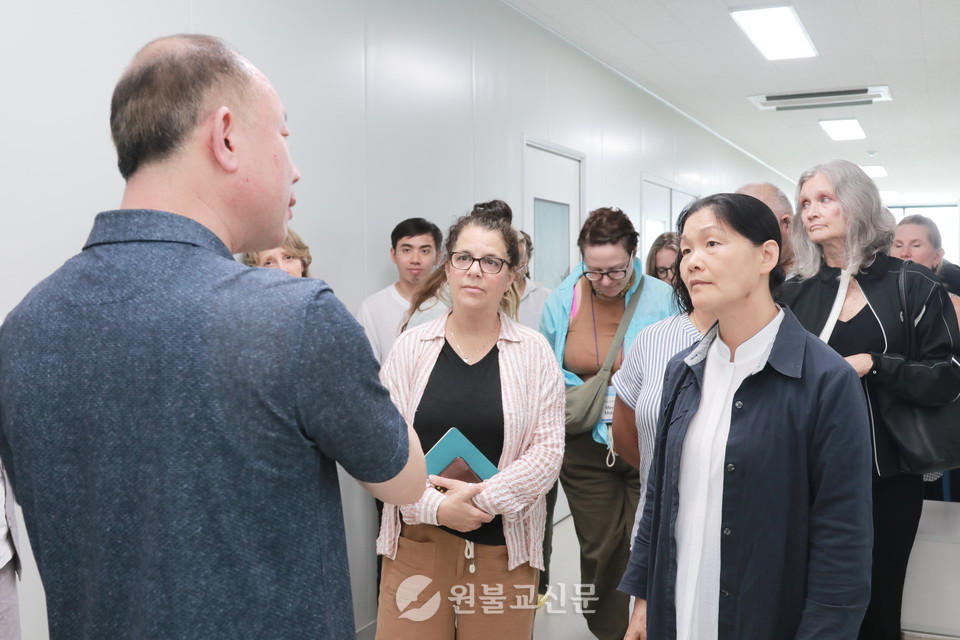
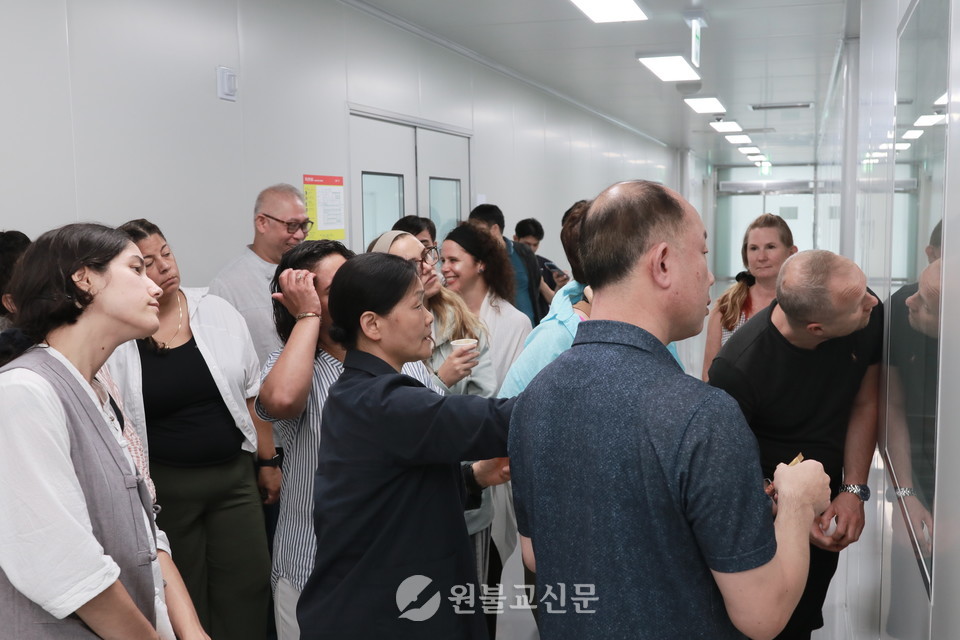
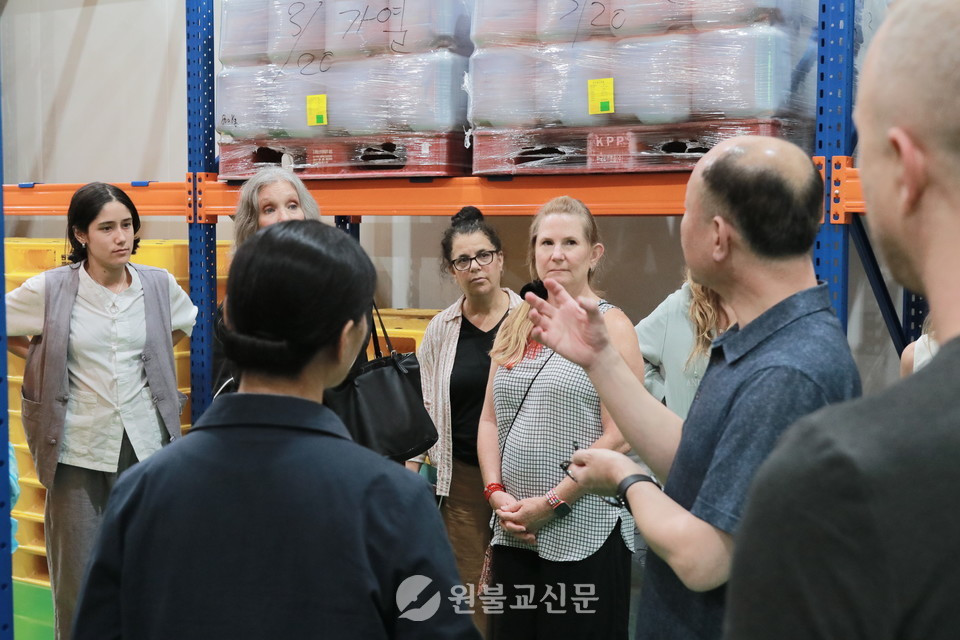
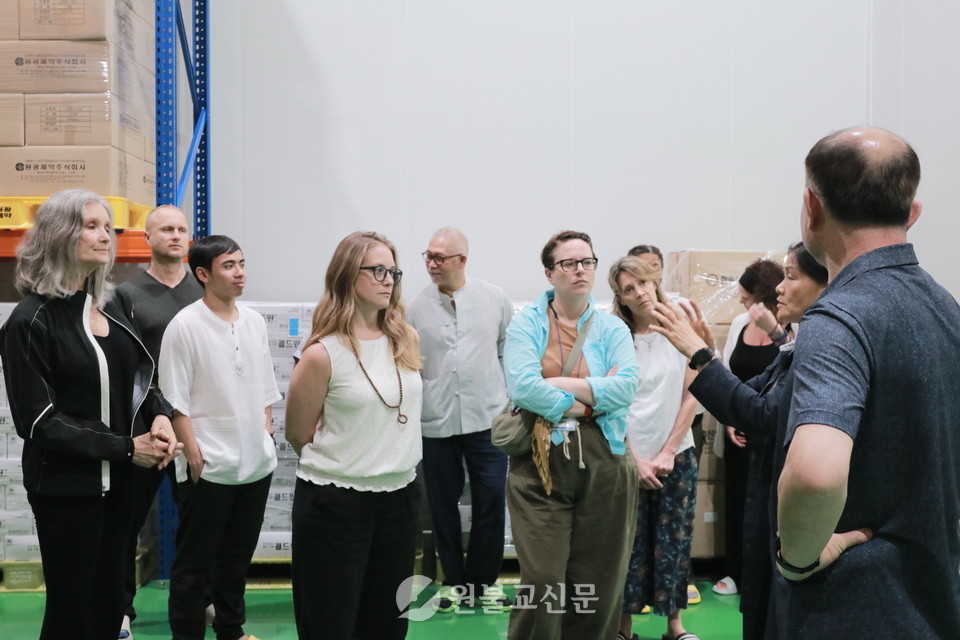

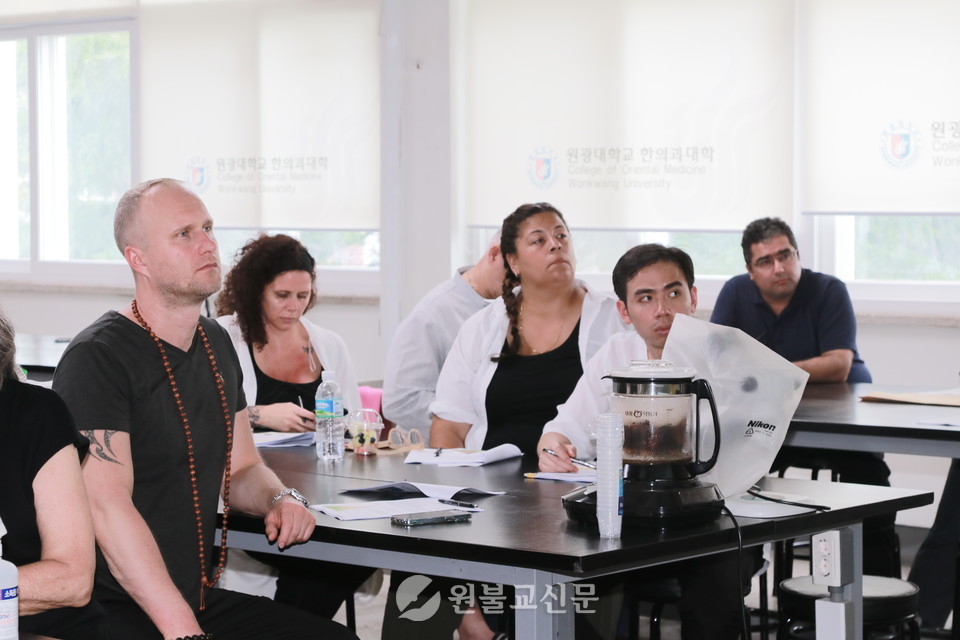
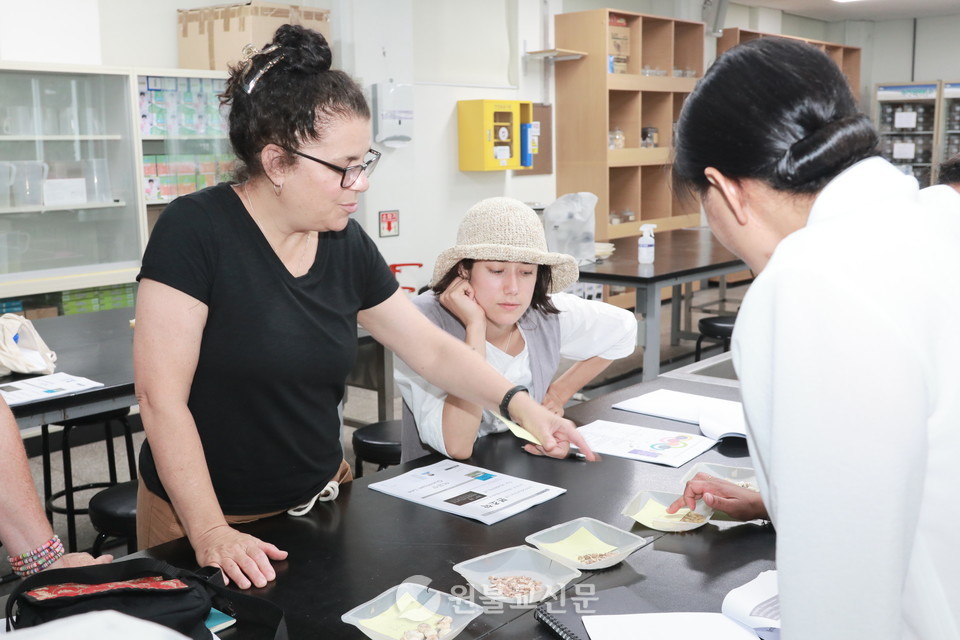

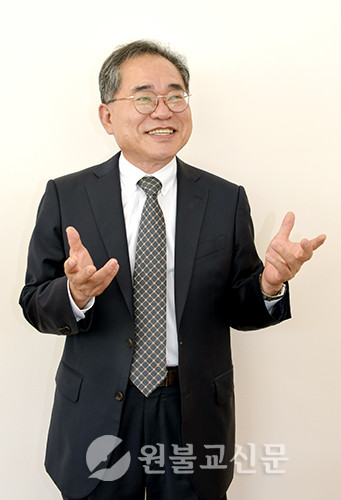 오원선 미주선학대학원대학교 신임총장
오원선 미주선학대학원대학교 신임총장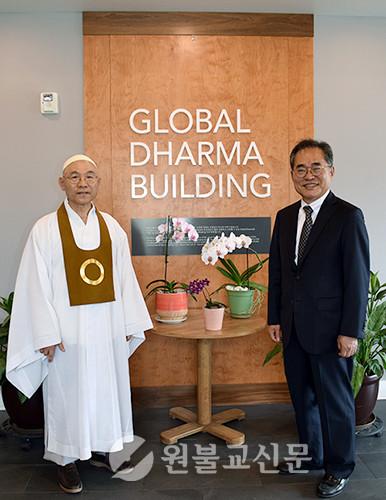 6월 26일 미주선학대학원대학교를 방문한 전산종법사와 함께.
6월 26일 미주선학대학원대학교를 방문한 전산종법사와 함께.